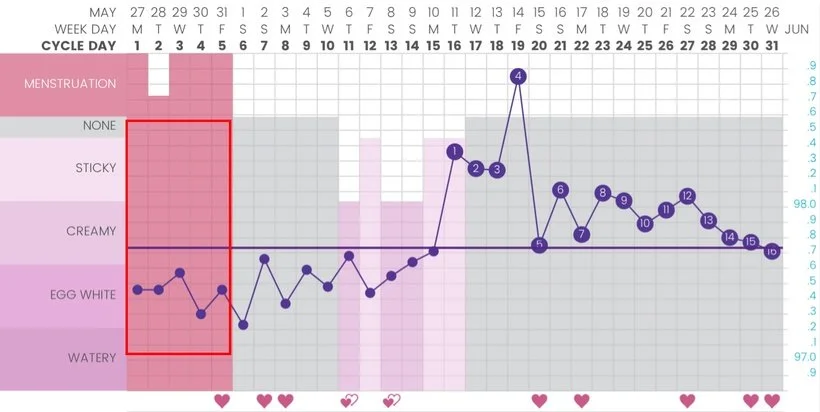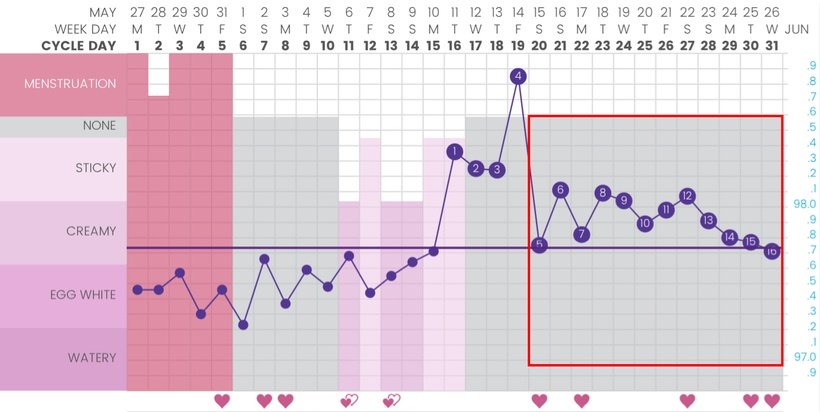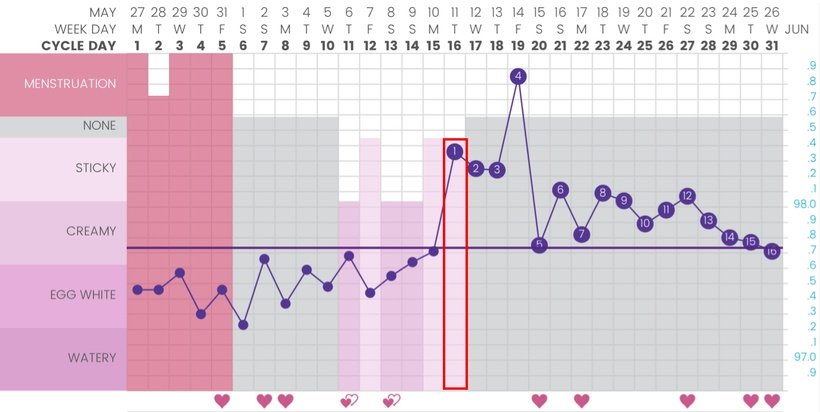FAM 101 - Part 4 - Interpreting Your Data
FAM 101 - Part 4 - Interpreting Your Data
In Part 1 of FAM101, we looked at gathering the tools you'll need to perform the fertility awareness method with a high degree of accuracy. In Part 2 we covered what we chart in the fertility awareness method, including your 3 primary fertility signs, as well as secondary fertility signs, and other health data of your choosing. Part 3 went through the details of charting your data accurately via paper chart or FAM tracking app. Finally, we reach Part 4 - a guide to interpreting your data.
The FAM 101 series has four parts:
Part One: Tools of Fertility Awareness
Part Two: What We Chart & The Fertility Signs
Part Three: Charting Your Data Accurately
Part Four: Interpreting Your Data
Your data is yours. You can use it for any purposes you deem fit. There are a few main reasons why people use these tools. The most common uses are for contraception, conception, or for charting your health & tracking your healing process. The over-arching goal of this method is body literacy, to understand yourself & what you need to feel well.
FAM for Contraception - Fertility awareness method is a viable form of non-invasive contraception for those who choose to use it. For highest efficacy, the rules must be followed completely & strictly. Understanding how to apply these rules to your chart is the key to practicing FAM for contraception effectively.
First Five Days Rule - If your cycles are more than 29 days, you are safe for ejaculation in the vagina on the first five days of your menstrual cycle if you had an obvious thermal shift 12-16 days prior.
Modified First Three Days Rule - If your cycles are less than 29 days, modify the first five days rule to the first three days rule.
Dry Day Rule - Before ovulation, you are safe for ejaculate in the vagina on the evening of every dry day, where you feel no cervical fluid & a dry vaginal sensation. The following day is considered potentially fertile. If you have cycles less than 29 days, you may have no dry days before ovulation. Understand that menstrual blood can mask cervical fluid in this case.
Peak Plus Four / Day Rule - You are considered infertile the evening (after 6 PM) of the fourth day after your Peak Day of cervical fluid. Peak day is the last day you feel wet vaginal sensation and observe fertile quality cervical fluid.
Temp Plus Three / Thermal Shift Rule - You are safe for unprotected sex with ejaculate in the vagina on the evening of the third consecutive day your temperature was above the coverline. The presence of progesterone raises the body temperature and this confirms ovulation occurred on the last day before the rise. If you observe Temp +3 before Peak +4 you are still considered safe on the evening of the third day after the rise above the coverline.
FAM for Conception - Fertility awareness identifies ovulation in a diagnostic & retroactive process. Cervical fluid & position are diagnostic signs which tell you when you are fertile in the moment. This is why FAM is great at helping you conceive when you plan to. The shift in basal body temperature retroactively confirms that ovulation has already occurred on the last day before the rise, and 18 days of high temperatures indicates an implantation.
Peak Day Implantation Guide - Semen in the vagina is most likely to result in an implantation on the Peak Day - the last day you observe wet, egg-white, spotting cervical fluids, or otherwise lubricative vaginal sensation.
Wet Days Guide - Semen in the vagina can result in an implantation on every day you feel fertile-quality cervical fluid. If your partner has a low sperm count, consider intercourse every other day, having them abstain from ejaculating until your fluid becomes slippery & wet.
Thermal Shift Guide - Continue intercourse or other form of insemination through the first morning you observe a thermal shift
FAM for Health - The menstrual cycle is known as the fifth vital sign. It can tell you an incredible amount of information about your body and where you may need support. Often, FAM charts can be better than blood tests at spotting underlying issues. Disturbances to cycle ranges give signs of deeper issues that may be present. Work with a counselor and your practitioners to make a plan if you need to.
No Thermal Shift - Indicates you are not ovulating.
Irregular Cycle Lengths - Indicates you are struggling to ovulate, usually a deeper hormonal, metabolic, or environmental issue
Short Luteal Phases - Indicates low progesterone, and may result in infertility
Limited / No Cervical Fluid - Indicates low estrogen, and may result in infertility
Cervical Fluid Every Day - Indicates estrogen excess, and poor estrogen regulation
PCOS Charts - Indicates a deeper issue such as insulin resistance, thyroid disease, or immune dysfunction
Miscarriage - Indicated by luteal phases longer than eighteen days but resulting in a menstrual bleed
Thyroid Issues - Indicated by waking temperatures in a range that is too high (hyperthyroid) or too low (hyperthyroid)
Coming Off Contraceptives - Delay in the return of ovulation for the first few cycles after you stop using contraceptives
Congrats on reading the full FAM 101 series! We've come a long way.
You learned
The tools you need for fertility awareness charting
What we chart in the fertility awareness method
How to chart your data accurately
How to interpret your data for your own purposes
These skills can help you get started! Learning how to utilize menstrual cycle charting for your needs allows you to make the best choices for your health & future. As a person who menstruates, you deserve to feel well. Fertility awareness charting can be a tool that helps you to be in control of your body, its capabilities & its needs.
Need help understanding your charts? Contact me for more information about working together! Thanks for reading FAM 101 - Part 4 - Interpreting Your Data







